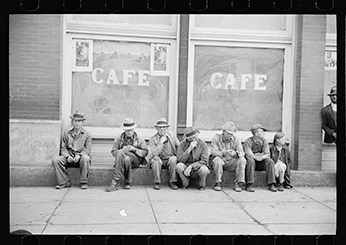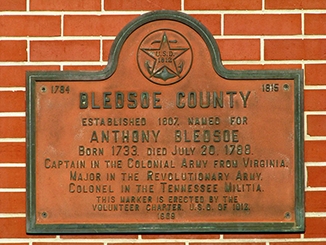Pikeville, Tennessee
A Time To Remember….
Pikeville, Tennessee
A Time To Remember…
The Sequatchie River Valley holds a significant historical importance as it was originally part of the Cherokee lands. However, in 1805, the Cherokee relinquished control of the valley to the United States under the Treaty of Tellico. This marked a turning point in the region’s history.
During the late 18th century, explorers and hunters began to navigate the valley. One notable figure was Anthony Bledsoe, who played an instrumental role in discovering and exploring the area. Due to his contributions, Bledsoe County was established in 1807, with the town of Madison serving as its county seat.
However, after the conclusion of the War of 1812, Pikeville emerged as the new county seat, replacing Madison. This shift in administrative power led to the growth and development of Pikeville as it became a hub for trade and commerce.
Pikeville’s establishment in 1816 can be attributed to the generosity of Charles Love, a prominent settler in the Sequatchie region. Love donated the lands on which Pikeville was built, solidifying its place in the county. Interestingly, the exact origin of the town’s name remains a mystery, with some speculating that it honors the renowned explorer General Zebulon Pike.
Situated on the stage route connecting Knoxville to Huntsville, Alabama, Pikeville thrived as a center for trade and supply. Farmers from the surrounding areas flocked to Pikeville to sell their goods and obtain essential supplies. These economic activities further propelled the growth and prosperity of the town.
Today, Pikeville stands as the sole incorporated town in Bledsoe County, preserving its rich history and serving as a testament to the region’s past.
1830’s to 1890’s
By the 1830s, Pikeville, Tennessee, was a thriving town with a population of 150. It boasted essential amenities such as a hotel, courthouse, and a United States Post Office. The town also had the Lafayette Academy, providing education to its residents. In terms of religious institutions, members of four denominations – Methodists, Baptists, Presbyterians, and Christians – came together to build a church in Pikeville during the 1850s.
As the Civil War approached in 1860, Pikeville’s population had slightly increased to 200. The town had two hotels to accommodate visitors. Several companies of Confederate soldiers originated from Pikeville and departed for war early on. However, Pikeville did not escape the conflict unscathed. In June 1863, Federal troops occupied the town, leaving its residents in a state of uncertainty.
In the aftermath of the war, Pikeville was focused on recovery during the 1870s. The St. Elmo Lodge was chartered, providing a place for social gatherings and events. Additionally, Peoples College was established, ensuring that education remained a priority for the town’s inhabitants.
The 1890s brought significant developments to Pikeville. The town became a crucial railroad terminal with the extension of the Nashville-Chattanooga-St. Louis Railroad. This connectivity opened up possibilities for trade and commerce. Telephones were also introduced to Pikeville during this time, improving communication within and beyond the town’s borders. Furthermore, Pikeville experienced the emergence of The Pikeville Banner, a weekly newspaper, as well as the establishment of The People and Citizens banks, providing financial services to its residents. These advancements signaled Pikeville’s progress and its transition into a more modern and interconnected community.
Joy Vincent Wigle
Joy Vincent Wigle (1890–1970), a combustion engineer from Michigan, made a significant impact on the small town of Pikeville. After meeting and marrying a local woman named Mattie Lawson, Wigle decided to settle down in Pikeville. He brought electricity to the town for the first time by electrifying the house he lived in on Poplar and Wiegle Streets, which was later named after him (despite being misspelled)
The town of Pikeville primarily relied on the Old Town Spring, located behind the historic Ross House, as its main water source until around 1920. However, thanks to Wigle’s efforts, electricity became a common feature in Pikeville. But this was not his only contribution to the community. Wigle also bottled Coca-Cola and crafted wrought iron railings, showcasing his versatility and entrepreneurial spirit.
Wigle’s engineering prowess resulted in two U.S. patents in 1931. He invented a coin selecting device (1,798,289) and a braking mechanism (1,814,535), which further solidified his reputation as an innovative mind. His dedication to education was evident as well, with both of his sons attending the engineering school at Vanderbilt University. His son Tom played a part in building U.S. Route 127, specifically the section near the county line that ascends the mountain. Tom worked on this project during one of his summer jobs while studying at Vanderbilt.


Upon his passing, Wigle was laid to rest alongside his wife in the family plot at Pikeville City Cemetery. His son Tom, who also passed away later, rests beside them. The impact of Wigle’s efforts can still be seen in Pikeville today. Thanks to him, electricity became a basic necessity, a new high school was built, and the town’s residents owned several automobiles, reflecting the progress and development that occurred under his influence.

25 Municipal Drive
Pikeville, Tennessee 37367



